Catherine's Curiosities
Articles on henna and hair by Catherine Cartwright-Jones, PhD
![]() Henna and Lice Control
Henna and Lice Control
Head lice (Pediculus humanus capitis) have been itchy, contagious pests annoying humans for millennia, living in people’s hair and sucking their blood. Henna will kill head lice! One application of henna paste to the hair can kill head lice as well as killing the nits and nymphs without resorting to chemical treatments or shaving the head. Read more at:http://www.mehandi.com/Articles.asp?ID=297![]() Henna for Christmas Mass in Sicily, 1184
Henna for Christmas Mass in Sicily, 1184
Christian women in the medieval world of Spain, Sicily, Egypt, North Africa, and the Levant wore henna, and felt it was suitable adornment for the celebration of Christmas. Islamic culture, with its advanced understanding of science, mathematics, medicine and literature, including women’s use of henna, was part of a prosperous and enlightened culture in southern Europe after the fall of the Roman Empire and before the Crusades.
Read more:http://www.tapdancinglizard.com/AS_henna_for_hair/chapters/chap2/sicily.pdf
More on video:"When the Moors Ruled in Europe" a video documentary presented by historian Bettany Hughes" [https://youtu.be/yA6dm7CCSDA ]![]() Henna during the Late Bronze Age in the Mycenaean Eastern Mediterranean
Henna during the Late Bronze Age in the Mycenaean Eastern Mediterranean
One of the centers of henna use in late Bronze Age was the perfume Industry of Mycenaean Pylos. The texts translated from Linear B from the burning of the palace in Pylos contain mentions of henna which have perplexed Classicists. In particular, they found it difficult to interpret the meaning of, “The red which is not red,� and “the perfume that has no fragrance.� Thirty three years after Cynthia Shelmerdine wrote the “Perfume Industry of Mycenaean Pylos,� Catherine Cartwright-Jones PhD proposes an answer to that conundrum.
Read more:http://www.tapdancinglizard.com//AS_henna_for_hair/chapters/chap2/Mycenaean_henna.pdf![]() Compound Henna - Part 1
Compound Henna - Part 1
Have you have ever wondered why stylists hate henna, and why some people think henna ruins hair, coats it, and makes it brittle? There is a reason, and that reason is “compound henna.� Compound henna hair dyes containing unlisted or obscurely declared metallic salts are the source of much of the misinformation about henna, and they are the reason that stylists malign henna. Hair dyed with a product containing metallic salts will be brittle, and the metallic salts will cross-react with the chemicals in per solution, lighteners, and oxidative hair dye. Henna benefits hair, does not coat it, and makes it strong. The additives in compound henna ruin hair, not the henna.
Read more:http://www.tapdancinglizard.com/AS_henna_for_hair/chapters/chap3/henna_reng_rastik_compound.pdf![]() "Henna Mislabeling, Misinformation, and Disinformation"In the early twentieth century the term henna was used for hair dye, whether or not the dye was actually henna; the word henna conveyed “safe� and “effective� during a time when early chemical dyes were haphazard and often dangerous. This Ancient Sunrise® Henna for Hair Chapter 3, Compound Henna provides insight into where the misconceptions about henna came from and how they proliferated into public consciousness in general, and among stylists in particular.Read more:http://www.tapdancinglizard.com/AS_henna_for_hair/chapters/chap3/henna_mislabeling_misinformation.pdf
"Henna Mislabeling, Misinformation, and Disinformation"In the early twentieth century the term henna was used for hair dye, whether or not the dye was actually henna; the word henna conveyed “safe� and “effective� during a time when early chemical dyes were haphazard and often dangerous. This Ancient Sunrise® Henna for Hair Chapter 3, Compound Henna provides insight into where the misconceptions about henna came from and how they proliferated into public consciousness in general, and among stylists in particular.Read more:http://www.tapdancinglizard.com/AS_henna_for_hair/chapters/chap3/henna_mislabeling_misinformation.pdf![]() Henna and the Evil Eye, Salt and Lilith and the Geography of G6PD Deficiency
Henna and the Evil Eye, Salt and Lilith and the Geography of G6PD Deficiency
Traditions of averting malevolent spirits with henna and salt to may have altered the incidence of Glucose-6-phosphate dehydrogenase deficiency in populations across the North Africa, the Levant, and the Arabian Peninsula. Recently, physicians have found that G6PD deficient neonates and young children, particularly males, who have been hennaed according to local blessing and curing traditions in Turkish and Bedouin Muslim cultures, suffer hyperbilirubinemia and acute hemolytic crisis. In Jewish traditions in the same regions, children were traditionally rubbed with salt rather than henna. This paper was written in partial fulfillment of requirements for PhD studies, under advisor Dr. J Tyner PhD, Geography Department, Kent State University, 2008.
Read more:http://www.tapdancinglizard.com/g6pd/geog6pdhennalilith.pdf![]() Para-phenylenediamine and Henna
Para-phenylenediamine and Henna
Though para-phenylenediamine was recognized as dangerous to human health soon after it was invented, it was used in hair dye and marketed as more desirable than henna. This succeeded because corporations were able to convince women that para-phenylenedamine was modern and convenient, that red hair was culturally undesirable, that women with gray hair would be forsaken by friends and lovers, and that women who filed injury lawsuits against the hair dye corporations would never be believed.Read More:http://www.tapdancinglizard.com/AS_henna_for_hair/chapters/chap3/henna_ppd.pdf![]() Chapter 3, Compound Henna, part 4: Walnut, Silver Nitrate, and Para-Phenylenediamine as Brunette Hair Dye
Chapter 3, Compound Henna, part 4: Walnut, Silver Nitrate, and Para-Phenylenediamine as Brunette Hair Dye
Why do some beauty bloggers tout walnut as hair dye? Why do some natural product suppliers sell walnut powder for hair dye? They haven't done their homework.
Henna and indigo mixes will dye hair brunette and black colors. The technique of using henna and indigo never did translate very well to mass production and the demand for convenience. Hair dye manufacturers wishing to sell brunette hair dye tried to formulate a walnut dye, but that also didn't translate to mass production and the demand for convenience. For decades, companies injured many customers selling silver nitrate and para-phenylenediamine as walnut hair dye until the national Food and Drugs Act stopped them. Recently, various beauty bloggers have again tried to claim that one can dye hair brunette naturally with walnut, but this segment of the Ancient Sunrise® Henna for Hair Book will tell you why that doesn't work.
Read more:http://www.tapdancinglizard.com/AS_henna_for_hair/chapters/chap3/Walnut.pdf![]() Henna’s Significance in Amazigh Id, Circumcision and "Night of the Henna" Celebrations
Henna’s Significance in Amazigh Id, Circumcision and "Night of the Henna" Celebrations
Most online articles about henna begin with “The history of henna is lost in the mists of time,� and continue into fantasy, hoping that the reader is not going to press the issue. If you are curious about where and what henna really was before the disruptions of two world wars and globalization, this research paper may interest you. At the turn of the 19th century, henna was understood very differently. Moroccan villagers applied henna for Id al-Adha, circumcision, and the “Night of the Henna". This paper establishes the common ground of these events, and the importance of henna in the celebrations, based on eyewitness accounts from the late 1800’s and early 1900’s.
Read more:http://www.tapdancinglizard.com/biblos/significanceofhenna1/sighenna.pdf![]() North African Women’s Cosmetic paints: Method of Evaluation and Interpretation
North African Women’s Cosmetic paints: Method of Evaluation and Interpretation
The popularity of darkened brows tempts women to use oxidative hair rather than eyebrow pencil. Chemical hair dye is dangerous to use on the face and can cause severe allergic reactions and blindness. Do not use products sold as ‘black henna’ or pre-mixed henna cones to darken eyebrows. Some eyebrow dye sold in drugstores contains para-pheneylenediamine, and any eyebrow dye should be regarded as potentially dangerous. Google “eyebrow dye allergic reaction� to see the injuries these dyes cause.
Read more:http://www.hennapage.com/henna/encyclopedia/nahq/HQNA2.pdf
Temptu from mehandi.com can be safely used to paint eyebrows and temporary tattoos that will last several days. Temptu can be removed with lotion and some scrubbing with a washcloth.![]() The Functions of Childbirth and Postpartum Henna Traditions
The Functions of Childbirth and Postpartum Henna Traditions
Hennaing a woman after she gives birth was a traditional way to deter what were believed to be malevolent spirits that cause disease, depression, and poor bonding with her infant. The action of applying henna to a mother after childbirth, particularly to her feet, keeps her from getting up to resume housework. A woman who has henna paste on her feet must let a friend or relative help her care for older children, tend the baby, cook, and clean. This allows her to regain her strength and bond with her new baby. She is also comforted by having friends who care about her well-being, and is helped to feel pretty again. The countries that have these henna traditions have very low rates of postpartum depression.
Read more:http://www.hennapage.com/henna/what/freebooks/HPJpp2.pdf![]() Harquus: North African Women’s Traditional Body Art Volume 2: Paint
Harquus: North African Women’s Traditional Body Art Volume 2: Paint
The popularity of darkened brows tempts women to use oxidative hair rather than eyebrow pencil. Chemical hair dye is dangerous to use on the face and can cause severe allergic reactions and blindness. Do not use products sold as ‘black henna’ or pre-mixed henna cones to darken eyebrows. Some eyebrow dye sold in drugstores contains para-pheneylenediamine, and any eyebrow dye should be regarded as potentially dangerous. Google “eyebrow dye allergic reaction� to see the injuries these dyes cause. Temptu from mehandi.com can be safely used to paint eyebrows and temporary tattoos that will last several days. Temptu can be removed with lotion and some scrubbing with a washcloth.
Read more:http://www.hennapage.com/henna/encyclopedia/nahq/HQNA2.pdf![]() Introduction: Ancient Sunrise® Henna for Hair Chapter 4: Science and Microscopy, Part 1: The Botany of HennaEvery so often somebody asks me where to get henna seeds so they can grow their own henna instead of buying it. This chapter is the full explanation of, “I can tell you were to get henna seeds, but growing your own may not be as expeditious as you hope.�
Introduction: Ancient Sunrise® Henna for Hair Chapter 4: Science and Microscopy, Part 1: The Botany of HennaEvery so often somebody asks me where to get henna seeds so they can grow their own henna instead of buying it. This chapter is the full explanation of, “I can tell you were to get henna seeds, but growing your own may not be as expeditious as you hope.�
Read more: http://www.tapdancinglizard.com/AS_henna_for_hair/chapters/chap4/henna_botany.pdf![]() Chapter 4: Science and Microscopy Part 2: The Phytochemistry of Henna, Lawsonia inermis L. [LythraceaeSome henna hair dye companies have claimed that all of the various colors of their henna hair dye come from henna and henna only; that red henna was from leaves, black henna was from henna roots, and brown henna was from henna bark. This was not, and cannot have been true. Lawsone is the only dye molecule produced from henna in a significant amount and it is only produced from the leaves. There is no other dye in any other part of the henna plant that will dye hair, and henna stains keratin only in the range of copper to dark auburn.Read more: http://www.tapdancinglizard.com/AS_henna_for_hair/chapters/chap4/henna_phytochemistry.pdf
Chapter 4: Science and Microscopy Part 2: The Phytochemistry of Henna, Lawsonia inermis L. [LythraceaeSome henna hair dye companies have claimed that all of the various colors of their henna hair dye come from henna and henna only; that red henna was from leaves, black henna was from henna roots, and brown henna was from henna bark. This was not, and cannot have been true. Lawsone is the only dye molecule produced from henna in a significant amount and it is only produced from the leaves. There is no other dye in any other part of the henna plant that will dye hair, and henna stains keratin only in the range of copper to dark auburn.Read more: http://www.tapdancinglizard.com/AS_henna_for_hair/chapters/chap4/henna_phytochemistry.pdf![]() Finding Blue
Finding Blue
Why does Mad Sweeney have blue markings in the first season of "American Gods?" Why were warriors depicted with blue body markings in the movie Braveheart? Why were there blue body markings on women in King Arthur? Ancient Celts ornamented their skin blue during and into the period of Roman colonization. Are these modern portrayals of ancient Celtic body art accurate? We do not know for sure. Here is a book on how this work might have been done, why, when, and by whom.
Read more: http://mehandi.com/v/vspfiles/downloadables/bluenews.doc![]() The an epidemic of Para-phenylenediamine (PPD) Sensitization
The an epidemic of Para-phenylenediamine (PPD) Sensitization
For one hundred years, people have been exposed to PPD in an increasing number of products, and often at increasing levels. The generation of people who in their teens dyed their hair lack to be fashionably punk or Goth, or got “black henna� temporary tattoos have a statistically higher probability of being allergic to chemical hair dye. This is because increased exposure brings increased likelihood of allergic reaction. These reactions can range from hair loss to itching and swelling to open sores and even death from anaphylaxis. This slideshow outlines the cause and effect of allergy to para-phenylenediamine.
View the slideshow: https://www.mehandi.com/v/vspfiles/downloadables/1_1public_sensitization.pdf
This slideshow is part of a lecture and demonstration series that Ancient Sunrise® can bring to your salon so you can learn how to dye your hair safely, without using chemical hair dye. Join our ever growing number of people who dye their hair safely and successfully with henna. http://www.hennaforhair.com/beauticians/training.html
 Henna and Lice Control
Henna and Lice Control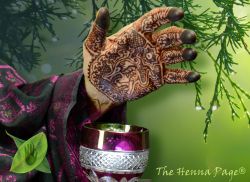 Henna for Christmas Mass in Sicily, 1184
Henna for Christmas Mass in Sicily, 1184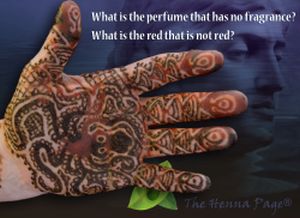 Henna during the Late Bronze Age in the Mycenaean Eastern Mediterranean
Henna during the Late Bronze Age in the Mycenaean Eastern Mediterranean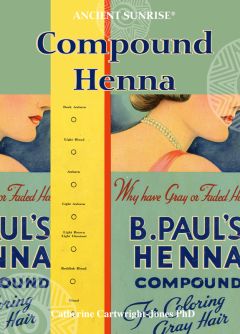 Compound Henna - Part 1
Compound Henna - Part 1 Henna and the Evil Eye, Salt and Lilith and the Geography of G6PD Deficiency
Henna and the Evil Eye, Salt and Lilith and the Geography of G6PD Deficiency Henna’s Significance in Amazigh Id, Circumcision and "Night of the Henna" Celebrations
Henna’s Significance in Amazigh Id, Circumcision and "Night of the Henna" Celebrations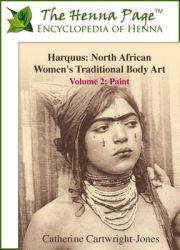 North African Women’s Cosmetic paints: Method of Evaluation and Interpretation
North African Women’s Cosmetic paints: Method of Evaluation and Interpretation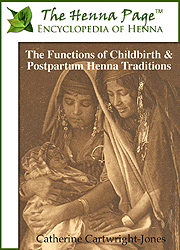 The Functions of Childbirth and Postpartum Henna Traditions
The Functions of Childbirth and Postpartum Henna Traditions Harquus: North African Women’s Traditional Body Art Volume 2: Paint
Harquus: North African Women’s Traditional Body Art Volume 2: Paint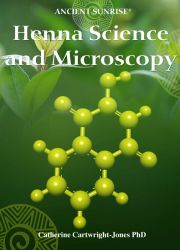 Introduction: Ancient Sunrise® Henna for Hair Chapter 4: Science and Microscopy, Part 1: The Botany of HennaEvery so often somebody asks me where to get henna seeds so they can grow their own henna instead of buying it. This chapter is the full explanation of, “I can tell you were to get henna seeds, but growing your own may not be as expeditious as you hope.�
Introduction: Ancient Sunrise® Henna for Hair Chapter 4: Science and Microscopy, Part 1: The Botany of HennaEvery so often somebody asks me where to get henna seeds so they can grow their own henna instead of buying it. This chapter is the full explanation of, “I can tell you were to get henna seeds, but growing your own may not be as expeditious as you hope.�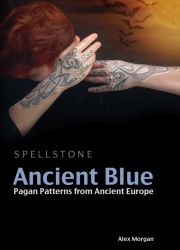 Finding Blue
Finding Blue The an epidemic of Para-phenylenediamine (PPD) Sensitization
The an epidemic of Para-phenylenediamine (PPD) Sensitization